Research at the Laboratory of Crystallography
Structure and compression behavior of Nb3Te4 and In0.54Nb3Te4 at pressures of 0-40 GPa
The transition metal chalcogenides Nb3Te4 and InxNb3Te4 (x=0.539(4)) have a hexagonal unit cell (space group P63/m). The niobium atoms are arranged in zig-zag chains parallel to the hexagonal c-axis with niobium distances close to metallic bonding distances (Fig. 1). The compounds show highly anisotropic, quasi-1-dimensional conductivity (along the niobium chains) and develop a charge density wave (CDW) at temperatures below 80K. In addition, large empty channels along the c-axis are present in theNb3Te4 framework structure. These channels are partially filled with indium atoms in InxNb3Te4. The intercalation has significant effects on the electrical properties of the compounds.
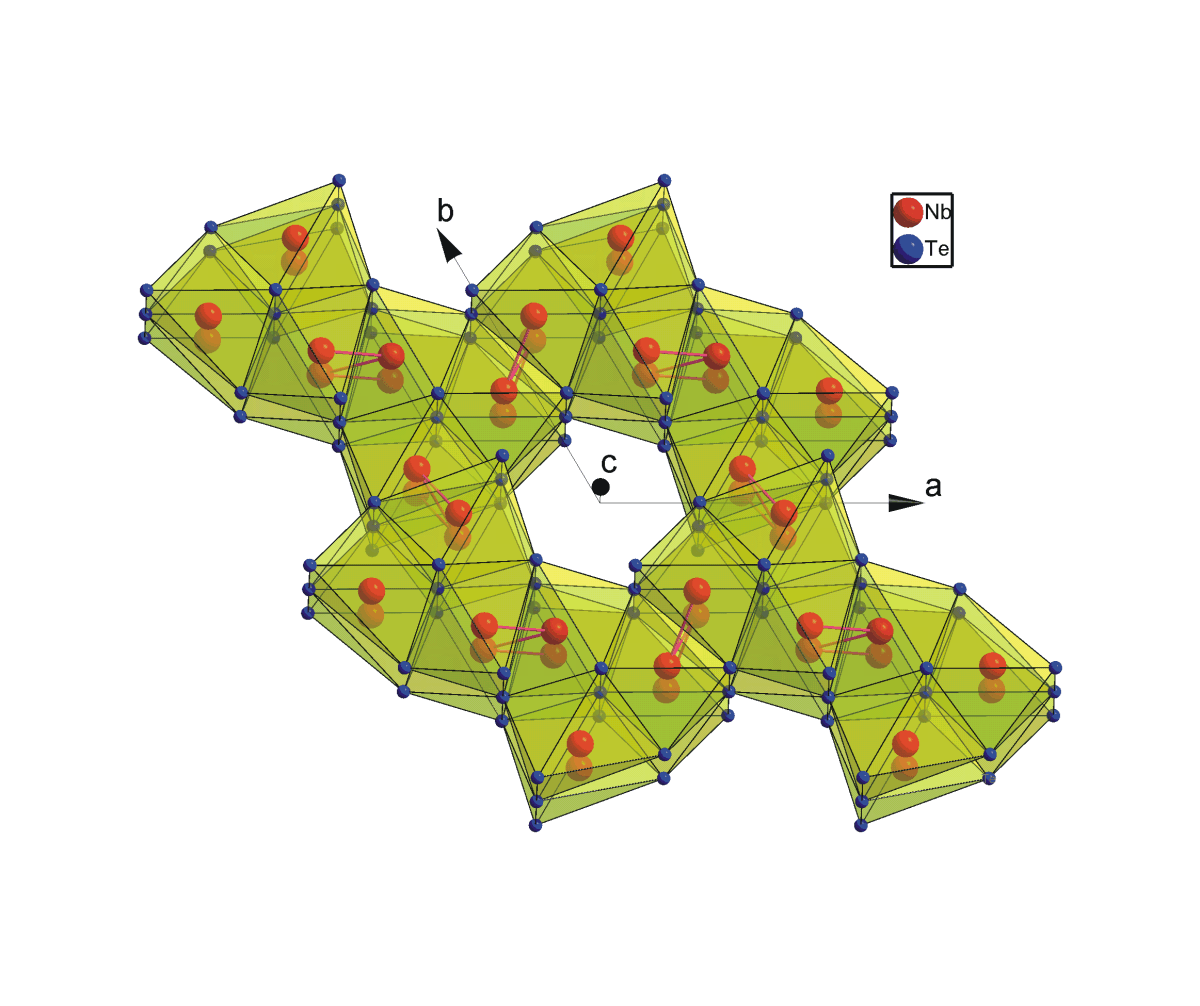
Fig.1: Crystal Structure of NB3Te4.
We have studied the influence of pressure on the crystal structure of these compounds in the pressure range of 0 to 40 GPa. High-pressure x-ray powder diffraction experiments were performed at the beamlines ID9 and ID30 of the ESRF. Finely ground powders were loaded into membrane driven diamond anvil cells. We used a methanol-ethanol mixture as pressure transmitting medium to collect data to pressures up to 10 GPa. For the experiments with pressures up to 40 GPa cryogenically loaded nitrogen was used as pressure medium. The use of online image plate systems allowed us to collect images of complete powder rings (Fig. 2) in relatively short time. Conventional powder patterns of intensity versus scattering angle were obtained by integration of the images over the rings.
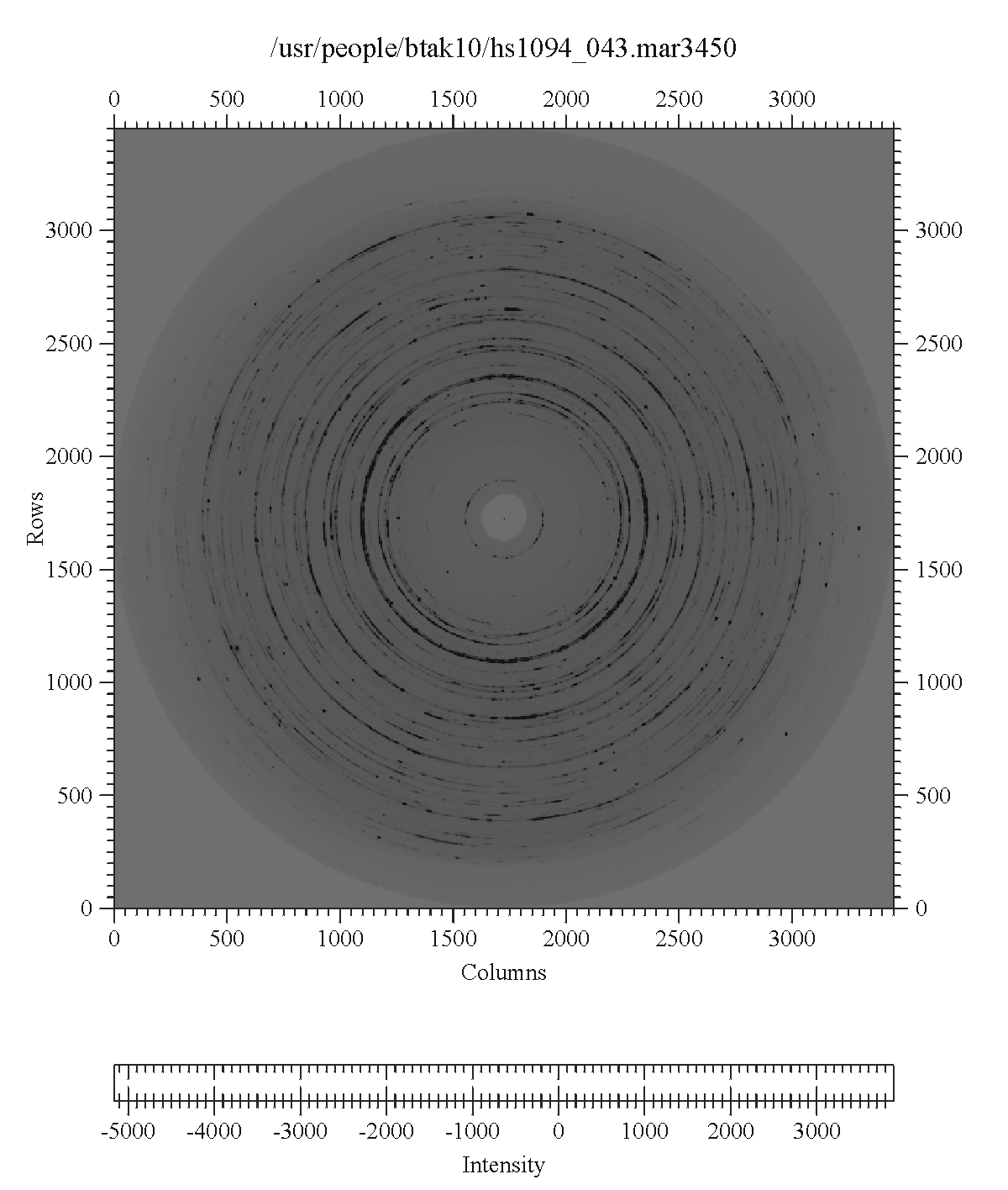
Fig. 2: Image Plate recording of InxNb3Te4 collected at a pressure of 0.52 GPa. The inhomogenity of the powder rings results from grain size effects.
The computer program Jana2000 [1] was used to perform Rietveld refinements of the data. Complete structural information for all data was obtained. The pressure dependence of the unit cell volumes were fitted with a Vinet equation of state and the bulk modulus for each compound was determined (Fig.3, Fig.4).
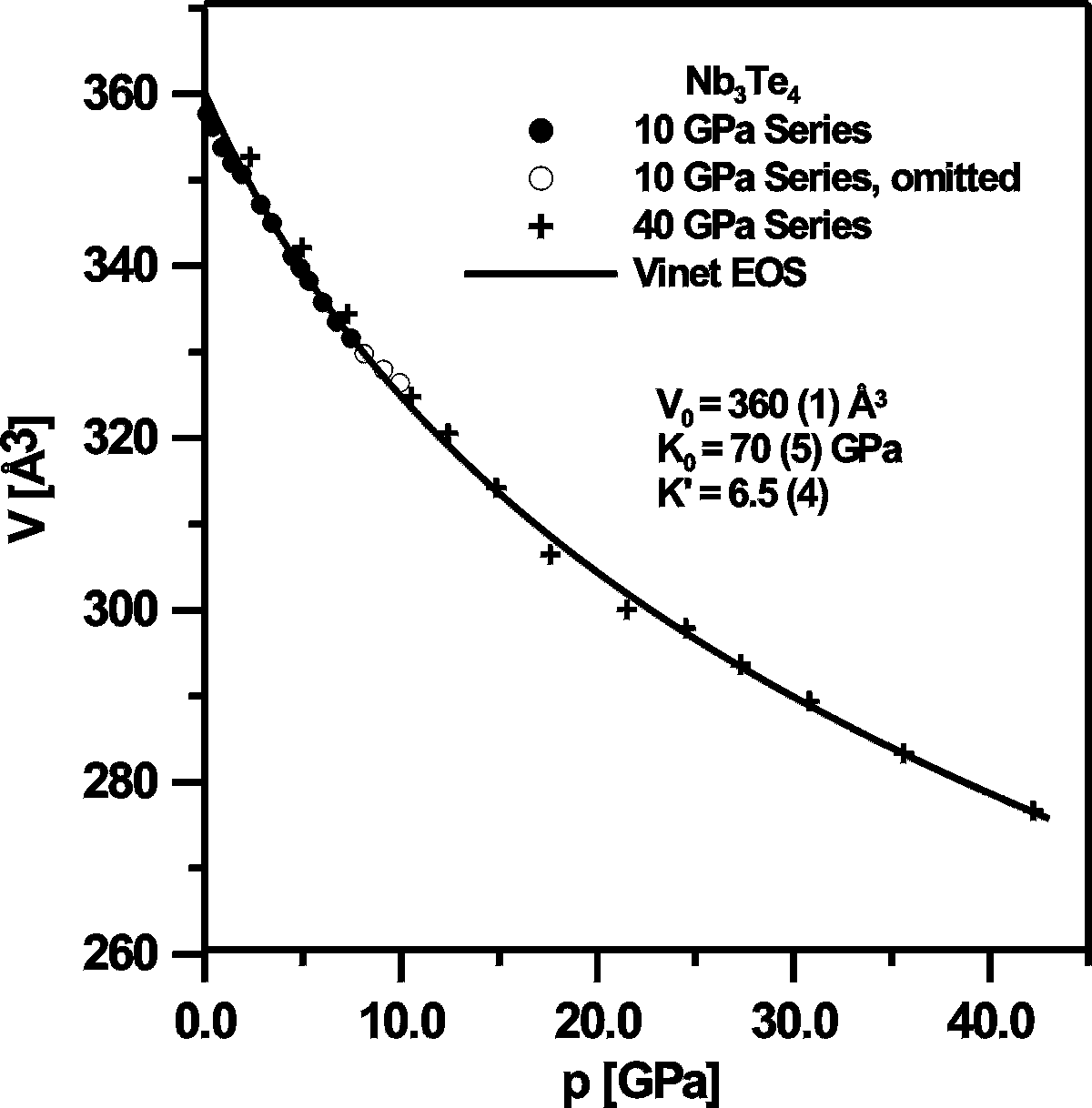
Fig. 3: Pressure dependence of the unit cell volume of Nb3Te4. The solid line indicates a fit with a Vinet EoS. The refined parameters were the volume at pressure = 0 GPa (V0), the bulk modulus at pressure = 0 GPa (K0) and the pressure derivative of the bulk modulus (K').
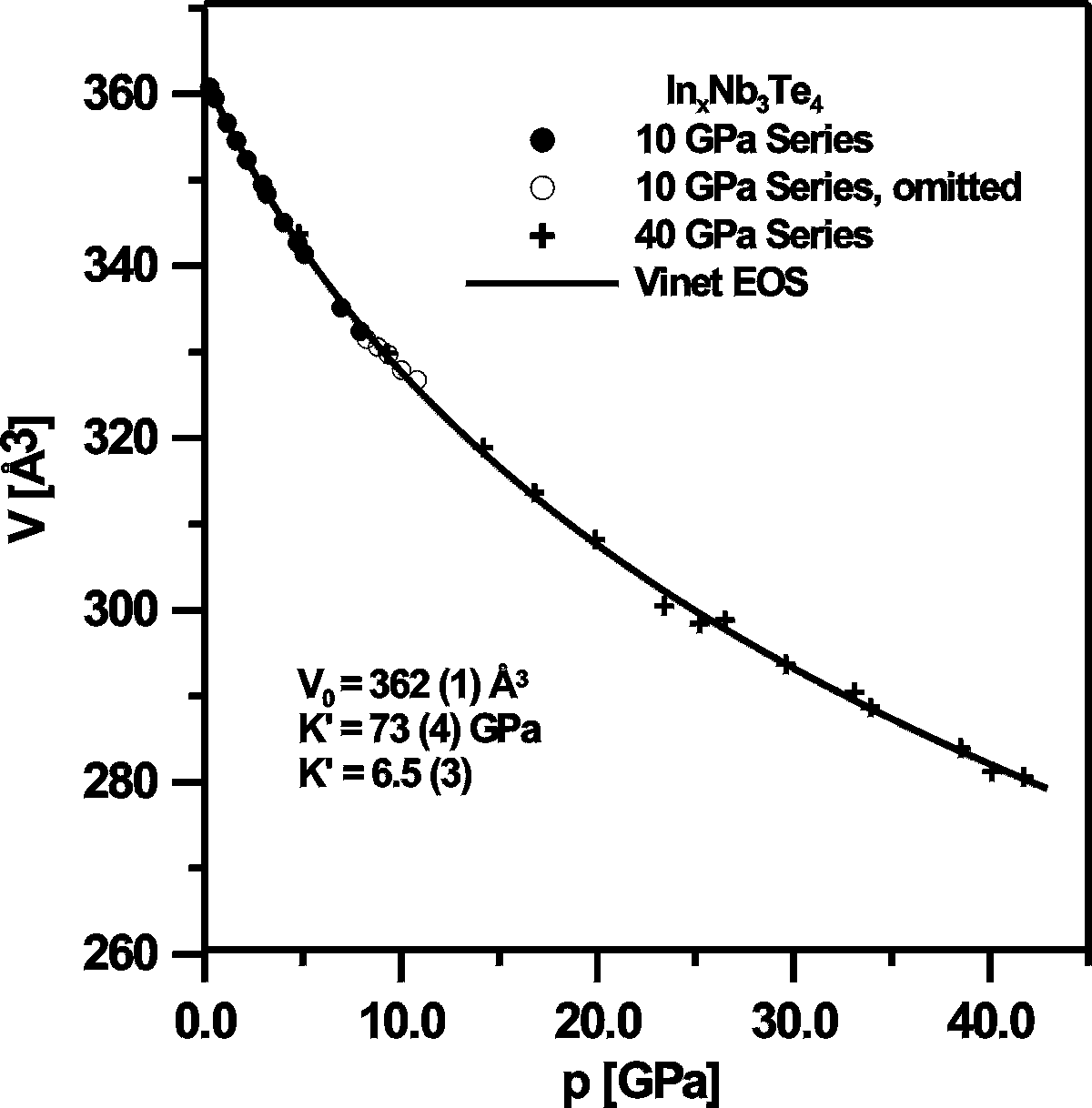
Fig. 4: Pressure dependence of the unit cell volume of InxNb3Te4. The solid line indicates a fit with a Vinet EoS. The refined parameters were the volume at pressure = 0 GPa (V0), the bulk modulus at pressure = 0 GPa (K0) and the pressure derivative of the bulk modulus (K').
It became clear that on increasing the pressure the compression of the crystal structures in directions perpendicular to the axis of the channels is almost entirely due to the shrinking of the channels which follows from the comparison of the pressure dependencies of the channel radius r and the lattice constant a (Fig. 5, Fig. 6). At first it seems to be surprising that there is almost no difference in the behavior of the empty channels (Nb3Te4) and of the partially filled channels (InxNb3Te4). However this can bee understood, when one considers the size of the channels. In the pressure range up to 40 GPa the radius of the channels is larger than a indium tellurium bonding distance. At higher pressures repulsive effects between the indium and the walls resulting in significant changes of the compression behavior are expected.
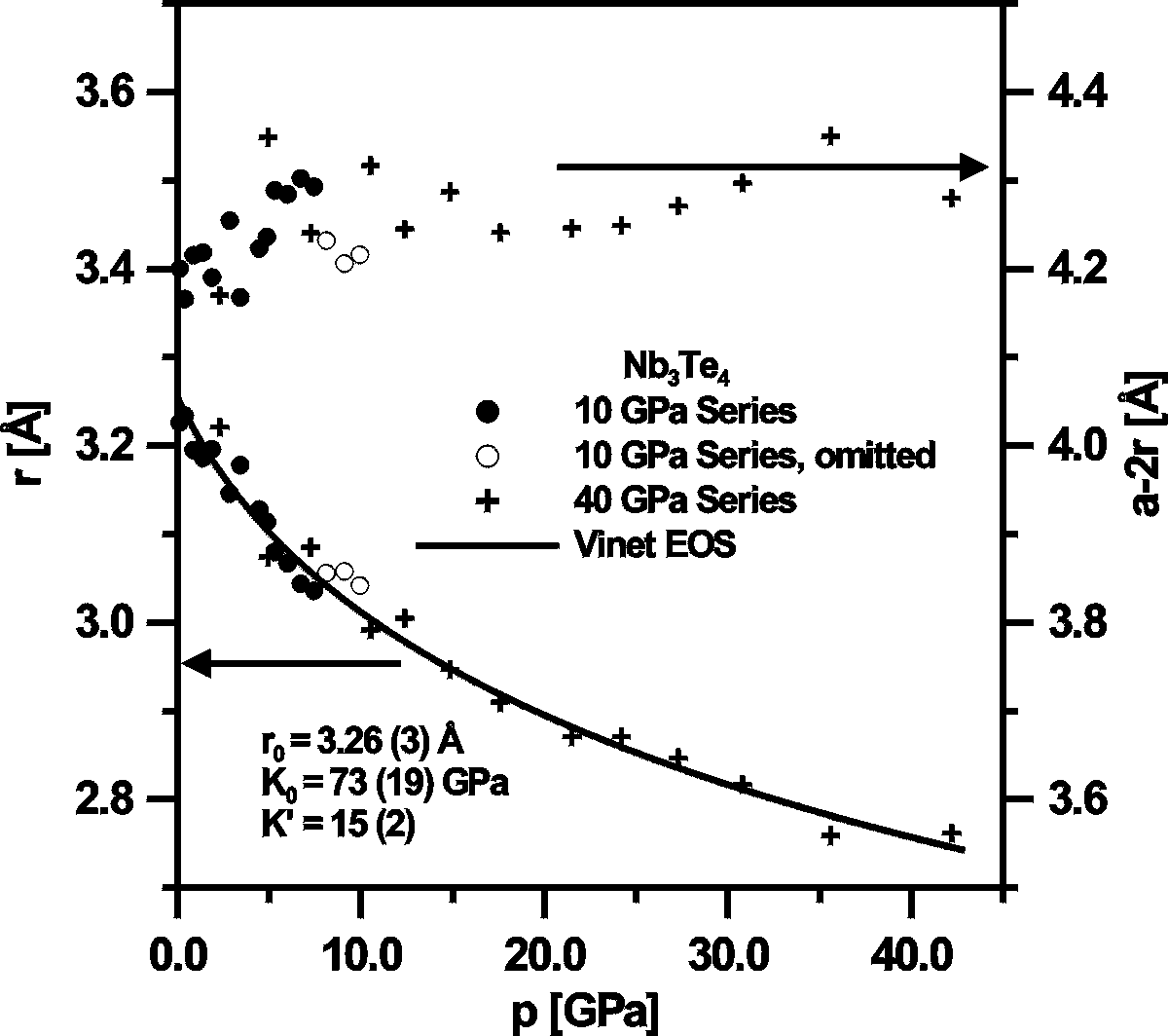
Fig. 5: Pressure dependence of the channel radius r (left scale, lower trace) and of a-2r (right scale, upper trace) of Nb3Te4. The solid line indicates a fit with a Vinet EoS to the pressure dependence of the radius. The refined parameters were the radius at pressure = 0 GPa (r0), the "bulk modulus" of the radius at pressure = 0 GPa (K0) and the pressure derivative of the bulk modulus (K').
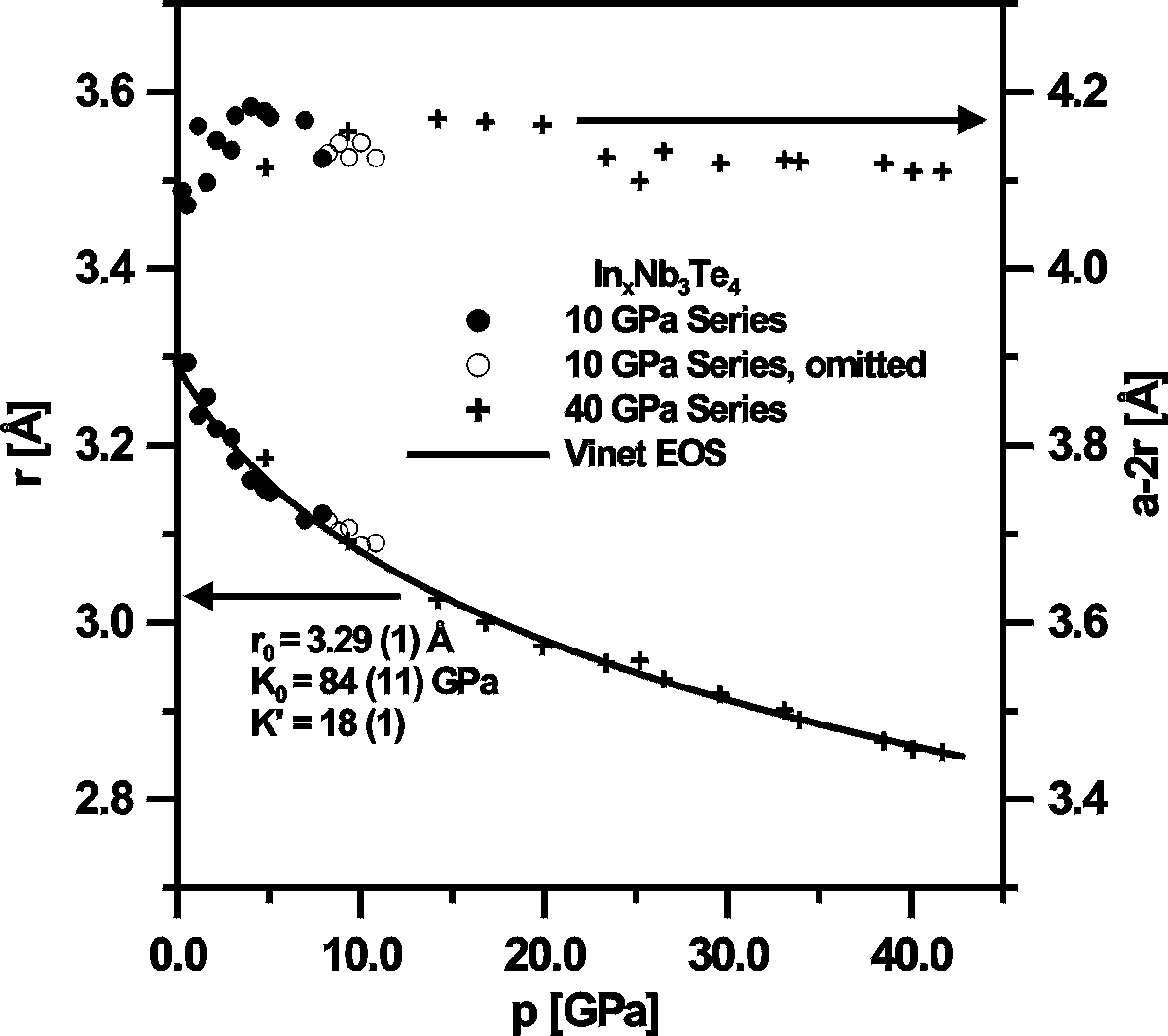
Fig. 6: Pressure dependence of the channel radius r (left scale, lower trace) and of a-2r (right scale, upper trace) of InxNb3Te4. The solid line indicates a fit with a Vinet EoS to the pressure dependence of the radius. The refined parameters were the radius at pressure = 0 GPa (r0), the "bulk modulus" of the radius at pressure = 0 GPa (K0) and the pressure derivative of the bulk modulus (K').
Literature:
[1] M. Dusek, V. Petricek, M. Wunschel, R. E. Dinnebier and S. van Smaalen (2001): Refinement of modulated structures against X-ray powder diffraction data with JANA2000. J. Appl. Cryst. 34, 398
[2] M. Wunschel, R. E. Dinnebier, S. Carlson and S. van Smaalen (2001): Bulk modulus and non-uniform compression of Nb3Te4 and InxNb3Te4 (x<1) channel compounds. Acta Crystallogr. B 57, 665.
